

September 2022 NewsletterISSN: 1933-8651
In this issue we present the following articles, news, announcements, and reviews:
|
Articles, Essays, and Reports
News and Announcements
New Books
New Exhibits
Conferences and Webinars
Book Reviews
|
The History of Black Studies
By Abdul Alkalimat
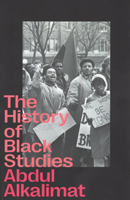
A surge of African American enrolment and student activism brought Black Studies to many US campuses in the 1960s. Sixty years later, Black Studies programmes are taught at more than 1,300 universities worldwide. This book is the first history of how that happened.
Black Studies founder and movement veteran Abdul Alkalimat offers a comprehensive history of the discipline that will become a key reference for generations to come. Structured in three broadly chronological sections -- Black Studies as intellectual history; as social movement; and as academic profession -- the book demonstrates how Black people themselves established the field long before its institutionalisation in university programmes.
At its heart, Black Studies is profoundly political. Black Power, the New Communist Movement, the Black women’s and students’ movements -- each step in the journey for Black liberation influenced and was influenced by this revolutionary discipline.
Abdul Alkalimat is a founder of the field of Black Studies and Professor Emeritus at the University of Illinois at Urbana Champaign. A lifelong scholar-activist with a PhD from the University of Chicago, he has lectured, taught and directed academic programs across the US, the Caribbean, Africa, Europe and China. His activism extends from having been chair of the Chicago chapter of the Student Non-Violent Coordinating Committee (SNCC) in the 1960s, to a co-founder of the Black Radical Congress in 1998.
This article provides an excerpt from this study, presenting the introduction chapter’s roadmap to this remarkable history.
Readers of this Newsletter can benefit from a promotional discount (40% off) to purchase this great study. Apply code “ADAN40” at checkout on the Pluto Press website.
[Read or download this full article here in Adobe .pdf format >>>].
[Return to table of contents]
Daniel Schávelzon and Afro-Argentina Heritage and Archaeology
By Ana Igareta
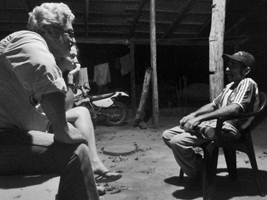
Daniel Schávelzon's extensive work in archaeology and heritage studies was recognized by the Society for Historical Archaeology's Mark E. Mack Community Engagement Award in 2022. The Mack Award honors individual researchers or research project teams who exhibit outstanding best practices in community collaboration, engagement, and outreach in their historical archaeology and heritage preservation work. The award commemorates the life and career of Mark E. Mack and encourages diversity in the Society for Historical Archaeology and our profession by cultivating relationships between archaeologists and stakeholder communities. Every year, researchers from all over the world are nominated for the prize and in 2021 I had the opportunity to nominate my mentor, Daniel Schávelzon. I have known Daniel for almost 30 years, since I was an archaeology student who started working as a volunteer in his team. Today I have the pleasure of being his colleague and friend, but I have never lost my student status: working with him means to be always learning. [Read or download this full article here in Adobe .pdf format >>>].
[Return to table of contents]
Multifaceted Terrains of Nigeria’s Heritage
By Samuel Oluwole Ogundele
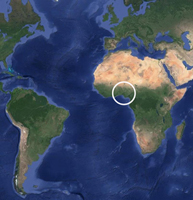
Nigeria, with a human population of over 200 million today, has a landmass of more than 900,000 square kilometres. This makes it the most populous country in the Black world. The coastal status of Nigeria coupled with numerous river networks, paved the way for cultural flows and exchanges at the local and global levels in antiquity. This scenario is critical to the formation and reshaping of the morphology and content of the grammar of numerous ethnicities, sub-ethnicities, languages, and epistemologies characterising this geo-polity. The ethnicities or nations include the Yoruba, Igbo, Hausa, Edo, Ijaw, Urhobo, Tiv, Idoma, Igala, Nupe, Berom, and Kanuri, among others. The region was a prominent source of African descendant populations across the Atlantic. Many also returned from the Americas to Nigeria in the 19th century C.E.
Archaeology, in conjunction with other close historical sciences such as cultural anthropology, art history, history, linguistics, and sociology, has a critical role to play in developing a new understanding and knowledge of the many facets of humanity, despite a multiplicity of racial, ethnic, cultural, and geographical categories and factors. Therefore, the conceptual and methodological domain of archaeology needs to be enlarged and enriched. This will enable the discipline to have an advantage in our competitive world of sustainable modern education and development. [Read or download this full article here in Adobe .pdf format >>>].
Black Heritage Resources Task Force Reports
By Maria Franklin et al.
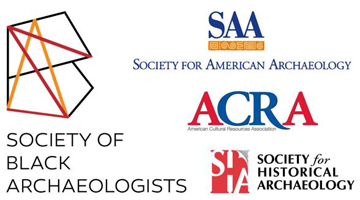
The report of the Black Heritage Resources Task Force, entitled "Documenting U.S. State and Territorial Approaches to Black Heritage, Diversity, and Inclusion in Preservation Practices" (2022), and related white paper, entitled "Recommendations for Raising the Visibility of Black Heritage Resources and Engaging with Black Stakeholders: Results from a Survey of State and Territorial Historic Preservation Offices and State Archaeologists" (2022), are now available on the tDAR website.
Documenting U.S. State and Territorial Approaches to Black Heritage, Diversity, and Inclusion in Preservation Practices (2022). Authors: Maria Franklin, Anna Agbe-Davies, Kimball Banks, Jodi A. Barnes, Thomas Cuthbertson, Sarah Herr, J.W. Joseph, Edward Morin, Burr Neely, Holly Norton, Tsim Schneider, and William White (link).
Summary: The Black Heritage Resources Task Force believes that State Historic Preservation Offices (SHPOs) can play an integral role in the preservation of African-American archaeology by providing guidance for the documentation of Black historic sites and consulting with Black stakeholders. This report provides reviews SHPO office planning documents and National Register for Historic Places nominations to understand the current practices regarding Black heritage resources. It also presents the results and analysis of two surveys distributed for the task force by the National Council of State Historic Preservation Officers. The task force recommends that SHPOs implement goals to diversify their state inventories, increase their engagement with Black communities and preservationists, and help Black communities to build capacity in heritage preservation practices.
* * * * *
Recommendations for Raising the Visibility of Black Heritage Resources and Engaging with Black Stakeholders: Results from a Survey of State and Territorial Historic Preservation Offices and State Archaeologists (2022). Authors: Maria Franklin, Anna Agbe-Davies, Kimball Banks, Jodi A. Barnes, Thomas Cuthbertson, Sarah Herr, J.W. Joseph, Edward Morin, Burr Neely, Holly Norton, Tsim Schneider, and William White (link).
Summary: This White Paper summarizes the work, findings, and recommendations of the Black Heritage Resources Task Force. The task force compile and analyze data on a range of State Historic Preservation Offices (SHPO) practices, including the identification and management of Black cultural resources, their implementation of diversity initiatives, and their role in consulting with Black stakeholders. The task force then provides recommendations to SHPOs on ways to strengthen and improve their objectives, practices, and endeavors related to racial diversity and inclusion.
[Return to table of contents]
Whitney Battle-Baptiste to Lead
the American Anthropological Association
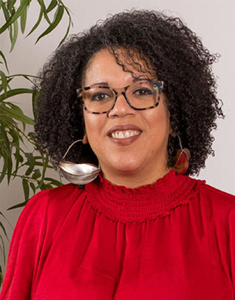 "The American Anthropological Association (AAA) has announced that Whitney Battle-Baptiste has been elected to serve as the organization’s president-elect/vice president for 2021-23. Battle-Baptiste will begin her term as president-elect/vice president at AAA’s Annual Meeting in Baltimore in November [2021] and will assume the office of association president at the 2023 Meeting."
"The American Anthropological Association (AAA) has announced that Whitney Battle-Baptiste has been elected to serve as the organization’s president-elect/vice president for 2021-23. Battle-Baptiste will begin her term as president-elect/vice president at AAA’s Annual Meeting in Baltimore in November [2021] and will assume the office of association president at the 2023 Meeting."
"Battle-Baptiste, professor of anthropology and director of the W. E. B. Du Bois Center at UMass Amherst, is a historical archaeologist of African and Cherokee descent whose work focuses primarily on the intersection of race, class, and gender in the shaping of cultural landscapes across the African diaspora."
"Her long history of leadership experience within the Association includes serving on the Committee on Ethics, the Nominations Committee, and the Anthropology of Tourism Interest Group, as well as with the Association of Black Anthropologists, and the Association for Feminist Anthropology."
"'I consider myself both a scholar and activist,' Battle-Baptiste said in an announcement from the AAA. 'In that regard, I plan on accelerating the pace of change envisioned in the association’s new five-year plan, including taking definitive, actionable steps regarding inclusion, equity, and diversity in our membership and advancing the field through a broad range of career pathways.'" [Read more in the University of Massachusetts Press Release >>>]
"Founded in 1902, the American Anthropological Association [AAA] is the world’s largest scholarly and professional organization of anthropologists. The Association is dedicated to advancing human understanding and applying this understanding to the world’s most pressing problems. . . . The Association is proud to belong to a number of inter-organizational collaborations, including the World Council of Anthropological Associations, the International Union of Anthropological and Ethnological Sciences, the Consortium of Social Science Associations, the National Humanities Alliance, and the American Council of Learned Societies" (AAA).
[Return to table of contents]
Alexandra Jones Appointed to Lead White House Commitee
 President Biden announced key appointments to boards and committees in August, 2022. Alexandra Jones was appointed to serve as Chair of the Cultural Property Advisory Committee. "Dr. Alexandra Jones, Founder and Chief Executive Officer of Archaeology in the Community, is an education leader focused on community outreach and service. Jones is currently Professor of Practice in History and Archaeology at Goucher College. She worked for PBS's television show 'Time Team America' as the Archaeology Field School Director, where she directed field schools for junior high and high school students at each of the sites for the 2013 season. She obtained dual Bachelor of Arts degrees from Howard University in History and Anthropology in 2001 and a Master of Arts degree in History from Howard University in 2003. She then attended University of California, Berkeley for a Master of Arts and Ph.D. in Anthropology with a concentration in Historical Archaeology in 2010. Jones serves on the Board for the Society of Black Archaeologists, the District of Columbia's Historic Preservation Review Board, the Board of Directors of the St. Croix Archaeological Society, and is an Academic Trustee for the Archaeological Institute of America." [Read more in the White House Press Release >>>]
President Biden announced key appointments to boards and committees in August, 2022. Alexandra Jones was appointed to serve as Chair of the Cultural Property Advisory Committee. "Dr. Alexandra Jones, Founder and Chief Executive Officer of Archaeology in the Community, is an education leader focused on community outreach and service. Jones is currently Professor of Practice in History and Archaeology at Goucher College. She worked for PBS's television show 'Time Team America' as the Archaeology Field School Director, where she directed field schools for junior high and high school students at each of the sites for the 2013 season. She obtained dual Bachelor of Arts degrees from Howard University in History and Anthropology in 2001 and a Master of Arts degree in History from Howard University in 2003. She then attended University of California, Berkeley for a Master of Arts and Ph.D. in Anthropology with a concentration in Historical Archaeology in 2010. Jones serves on the Board for the Society of Black Archaeologists, the District of Columbia's Historic Preservation Review Board, the Board of Directors of the St. Croix Archaeological Society, and is an Academic Trustee for the Archaeological Institute of America." [Read more in the White House Press Release >>>]
Dr. Jones also received the Society for Historical Archaeology's (SHA) John L. Cotter Award in 2022. "Established in 1998," this award "is named in honor of John Lambert Cotter (1911–1999), a pioneer educator and advocate for the discipline. The award recognizes outstanding achievement by an individual at the start of their career in historical archaeology. In 2022 [SHA] recognized Dr. Alexandra Jones, who has built her career around community-based archaeological practices. Her dissertation ('Gone But not Forgotten, Gibson Grove A.M.E. Zion Church: The Archaeology of an African American Church, 2010') focused on the cemetery in Cabin John, Maryland. She continues to partner with the community to manage the site and protect it from the encroachment of the nearby Capital Beltway (Interstate 495). In tandem with this important preservation work Dr. Jones founded Archaeology in the Community, an archaeology education nonprofit based in Washington, DC" (SHA Spring 2022 Newsletter).
[Return to table of contents]
Society of Black Archaeologists Advances International Dialogues
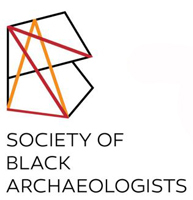 The Society of Black Archaeologists (SBA) engaged in vitally important outreach initatives, along with the Indigenous Archaeology Collective and other collaborators, to address racism, repatriation, and restorative justice issues in our society. The SBA "centers the histories and material cultures of global Black and African communities in archaeological research. By providing a strong network, mentorship, and educational access, the SBA works to resolve the ongoing systemic exclusion of Black and African scholars and communities from the field of archaeology. The SBA aims to provide avenues of engagement and training that will prepare Black and African scholars and communities to be active participants in the documentation, excavation, preservation, and interpretation of Black and African heritage" (SBA website).
The Society of Black Archaeologists (SBA) engaged in vitally important outreach initatives, along with the Indigenous Archaeology Collective and other collaborators, to address racism, repatriation, and restorative justice issues in our society. The SBA "centers the histories and material cultures of global Black and African communities in archaeological research. By providing a strong network, mentorship, and educational access, the SBA works to resolve the ongoing systemic exclusion of Black and African scholars and communities from the field of archaeology. The SBA aims to provide avenues of engagement and training that will prepare Black and African scholars and communities to be active participants in the documentation, excavation, preservation, and interpretation of Black and African heritage" (SBA website).
"To advance critical conversations about archaeology, a coalition of organizations created a nine-part webinar series. These public dialogues -- intended for both scholars and the larger public -- were among academics, artists, and community members. The topics traveled from problematic monuments, to repatriation, to new forms of storytelling, to questions about the future of Indigenous and Black archaeologies. Pushing and pulling this conversation were issues of human rights, restorative justice, heritage stewardship, and systems of knowledge." [Read more and access these webinars at Sapiens.org) >>>]
[Return to table of contents]
Journal of African Diaspora Archaeology & Heritage Tenth Anniversary
By Lydia Wilson Marshall and Christopher Fennell
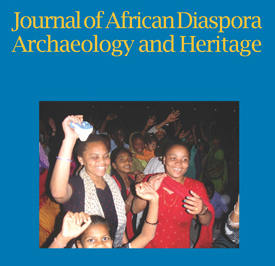
The Journal of African Diaspora Archaeology and Heritage (link) provides a focal point for peer-reviewed publications in interdisciplinary studies in archaeology, history, material culture, and heritage dynamics concerning African descendant populations and cultures across the globe. We welcome articles on broad topics, including the historical processes of culture, economics, gender, power, and racialization operating within and upon African descendant communities. We seek to engage scholarly, professional, and community perspectives on the social dynamics and historical legacies of African descendant cultures and communities worldwide.
We are proud to celebrate our journal's 10th anniversary!
Editor Lydia Wilson Marshall and Associate Editor Chris Fennell extend our sincere thanks to the journal's editorial board members: Alexis Adande, E. Kofi Agorsah, Scott Allen, Ana Lucia Araujo, Douglas Armstrong, Alice Bellagamba, Richard Paul Benjamin, Suzanne Blier, Shihan de Silva Jayasuriya, Caleb A. Folorunso, Maria Franklin, Faye V. Harrison, Kenneth Kelly, Mark Leone, Kevin MacDonald, Bertram Baltasar B. Mapunda, Philip Morgan, Paul Mullins, Neil L. Norman, Akin Ogundiran, Charles Orser, Jr., João José Reis, Francois G. Richard, Daniel O. Sayers, Daniel Schavelzon, Carmel Schrire, Hannes Schroeder, Paul Shackel, Theresa Singleton, Luis Claudio Pereira Symanski, Ibrahima Thiaw, John Thornton, Jonathan R. Walz, and Laurie Wilkie, among others.
Peer reviewers are fundamental to the success of any refereed journal. We thank our recent reviewers for sharing their expertise and their time: Jonathan Amakawa, Astrid Nonbo Andersen, Mark Anderson, Uzi Baram, Jodi Barnes, Lynsey Bates, Jane Baxter, Claudine Bonner, Caroline Bressey, Peggy Brunache, John Chenoweth, Chip Colwell, Geoffrey Cubitt, James Davidson, Kathryn Deeley, Madge Dresser, Clifton Ellis, Sean Eversley Bradwell, Kristen Fellows, Maria Teresa Ferreira, Ayana Flewellen, Maria Franklin, Mark Gillings, Rui Gomes Coelho, Edward Gonzalez-Tennant, Anne Haour, Khadene Harris, Barbara Heath, Adam Heinrich, David Imbua, J.W. Joseph, David Landon, Baz Lecocq, Nedra Lee, Mark Leone, Tania Andrade Lima, Barbara Little, Kevin MacDonald, Heather MacLeod-Leslie, Elisabeth McMahon, E. Arnold Modlin, J. Cameron Monroe, Teresa Moyer, Stephen Mrozowski, Paul Mullins, Alicia Odewale, Luke Pecoraro, Marcela Perdomo, Winston Phulgence, Crystal Ptacek, Matthew Reilly, Sara Rivers Cofield, Krysta Ryzewski, Patricia Samford, Daniel Sayers, Rebecca Shumway, Katrina Thompson, Rada Tirvassen, Mark Warner, William White, and Handel Wright, among others.
We look forward to the next decade to come!
You can follow the latest updates on journal articles and African diaspora archaeology and heritage on Twitter at @AfArchHeritage (link) and on Facebook (link).
[Cover photo courtesy of Ababu Minda Yimene.]
[Return to table of contents]
2022 Frederick Douglass Book Prize Finalists
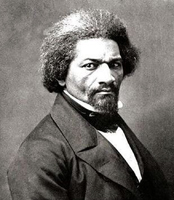
From Press Release -- Yale University's Gilder Lehrman Center for the Study of Slavery, Resistance, and Abolition today has announced the finalists for the twenty-fourth annual Frederick Douglass Book Prize, one of the most coveted awards for the study of the African American experience. Jointly sponsored by the Gilder Lehrman Institute of American History and the Gilder Lehrman Center for the Study of Slavery, Resistance, and Abolition at the MacMillan Center at Yale University, this annual prize of $25,000 recognizes the best book written in English on slavery, resistance, or abolition published in the preceding year.
The finalists are: Tiya Miles for All That She Carried: The Journey of Ashley's Sack, a Black Family Keepsake (Random House); Jennifer L. Morgan for Reckoning with Slavery: Gender, Kinship, and Capitalism in the Early Black Atlantic (Duke University Press); and Alexis Wells-Oghoghomeh for The Souls of Womenfolk: The Religious Cultures of Enslaved Women in the Lower South (University of North Carolina Press). The winner will be announced following the Douglass Prize Review Committee meeting in the fall, and the award will be presented at a celebration in New York City in February, 2023.
[Return to table of contents]
Recent Dissertations on Archaeology

The following, non-exhaustive list of dissertations and masters theses on African diaspora archaeology for the period since September 2010 was compiled by Chris Fennell based on listings in the Proquest.com service. Past Newsletter issues provided such lists annually, so they were indeed "recent." This time, we cover a decade to catch up. The September 2005, 2006, 2007, 2008, 2009, and 2010 issues of the African Diaspora Archaeology Newsletter provided similar compilations of dissertations for the period of 2000-2010. If you are aware of other recent dissertations, please email me, and I will include the information in a future newsletter edition. The dissertations listed below are doctoral theses (Ph.D.), unless otherwise indicated (M.A. or M.S.), and are listed in chronological order by year and then alphabetic order by the author name within each year. Abstracts and full texts are available online from the Proquest.com service.
Archaeology
2022
A Critical Race Theory and Archaeological Approach to Enslavement at the Dinsmore Plantation, by JeMiah Cannon, M.A., University of Cincinnati. 2022.
African Seminole Settlement Ecologies of Early Nineteenth Century Florida, by Jordan E. Davis, M.A., University of South Carolina. 2022.
Guns, Sundown Towns, and the Multi-Ethnic Old West: Nathan Harrison and Firearm Ownership in Late 19th and Early 20th Century San Diego County, by Michael Hoke, M.A., San Diego State University. 2022.
Ground-Penetrating Radar (GPR) Survey and Spatial Analysis of the George and Addie Giddens Cemetery, Opelika, AL, by Hayden C. Malloch, M.Sc., Auburn University. 2022.
Fluctuating Asymmetry and the Embodiment of Maternal Stress at Newton Plantation, Barbados, by Ciele Laine Rosenberg, M.A., North Carolina State University. 2022.
2021
The Materiality of Islamisation as Observed in Archaeological Remains in the Mozambique Channel, by N. Anderson, Ph.D., University of Exeter (UK). 2021.
Runaways and the Río Grande River: The Texas Underground Railroad to Mexico and Mexico’s Resolve to Uphold the Río Grande River as a Line of Resistance to Slavery, 1836-1861, by Michelle Nichole Balliet, Ph.D., Sam Houston State University. 2021.
Properties of Belonging: Landscapes of Racialized Ownership in Post-emancipation Barbados, by Stephanie Marie Bergman, Ph.D., College of William and Mary. 2021.
Slavery and Freedom on the Fringes of France: Historical Archaeology at Habitation La Caroline, French Guiana, by Elizabeth Catherine Clay, Ph.D., University of Pennsylvania. 2021.
Elemental and Bacterial Analysis of 17th and 18th Century New York African Burial Ground Grave Soil Samples with Bioethical Implications of Scientific Research, by Carter Clinton, Ph.D., Howard University. 2021.
Shackles, Collars, and Chains: Exposing the Treatment of Enslaved Black Women during the Middle Passage and as Part of the Archaeological Record (1700–1886), by Kelsey Dwyer, M.A., East Carolina University. 2021.
Beads, Buckles, Buttons, and Pipes: Embodiment of Identity at Somerset Place, NC, by Kiana Nicole Fekette, Ph.D., North Carolina State University. 2021.
Archaeo-Genomics of 17th & 18th Century Eastern North America: Insights into European Colonization and the African Diaspora, by Raquel Fleskes, Ph.D., University of Pennsylvania. 2021.
Creating a Common Culture of Slavery: Native, Black, and White Unfreedom in the Ohio River Valley, 1700–1865, by Alexis Guilbault, Ph.D., Indiana University. 2021.
A Collaborative Bioarchaeology of African Diaspora and Enslavement in Colonia Cañete, Peru, by Claire Kimberly Maass, Ph.D., Stanford University. 2021.
Creating Community: Examining Black Identity and Space in New Guinea, Nantucket, by Jared Muehlbauer, M.A., University of Massachusetts Boston. 2021.
Ephemeral and Forgotten: An Archaeological investigation of Race, Marginalization, and Historic Preservation, by Rebecca Schumann, Ph.D., University of Illinois, Urbana-Champaign. 2021.
Elusive Forever?: Assessing the Value of Least-Cost Networks in Locating Eighteenth-Century Maroon Archaeological Sites in St. Bernard Parish, Louisiana, by Tara Skipton, M.A., Florida State University. 2021.
"Until You Do Right by Me, Everything You Even Think About Gonna Fail:" An Investigation into the Macon Georgia Black Ancestors Buried within Muscogee Nation Ceremonial Homelands who are Lost Due to the Trauma of the Western Gaze, by Maia N. Wilson, M.A., University of Idaho. 2021.
Our Story, Our Homeland, Our Legacy: Settlement Patterns of the Geechee at Sapelo Island Georgia, from 1860 to 1950, by Colette D. Witcher, M.A., University of South Florida. 2021.
2020
Integrating Public Archaeology and Technology to Convey the History of the Mount Tabor Ame Zion Church and Its Community, by Steven Campbell, M.A., Indiana University of Pennsylvania. 2020.
Testing Techniques for Sexing the Subadult Pelvic Remains of Modern Humans from the African Diaspora, by Ayla Riley-Horst, M.S., George Washington University. 2020.
2019
Public Memory and the Interpretation of the Past: The Future Direction of the Presentation of the Diasporan History in the Great Dismal Swamp, by Karen Marie Black, M.A., American University. 2019.
The Archaeology of Small-Scale Slavery in Antebellum Missouri, by James Elliott Haas, M.A., Colorado State University. 2019.
"To Dwell, I'm Determined, on that Happy Ground": An Archaeology of a Free African-American Community in Easton, Maryland, 1787–Present, by Tracy H. Jenkins, Ph.D., University of Maryland, College Park. 2020.
Foodways of Pre- and Post-Emancipation African Americans at James Madison's Montpelier: A Zooarchaeological Analysis of Food Preference and Food Access, by Heather Lynn Lash, M.A., Indiana University of Pennsylvania. 2020.
An Archaeological Investigation of Enslavement at Gamble Plantation, by S. Matthew Litteral, M.A., University of South Florida. 2019.
Priestly Plantations: An Archaeology of Capitalism and Community in British North America, by Laura E. Masur, Ph.D., Boston University. 2019.
Rubble Along the Road: Determining the Function and Date of Occupation for a Structure on Orton Plantation, by Wesley Nimmo, M.A., East Carolina University. 2019.
The Last Nail in the Coffin: Challenging the Pan-African Material Culture Myth within a Mortuary Context, by Nicole LaShelle Palmeter, M.A., University of Tulsa. 2019.
"It's Not about Us": The Erasure of African American Heritage and the Rehistoricization of the First Africans on Jamestown Island, Virginia, by LaMarise Chardé Reid, M.A., College of William and Mary. 2019.
"Anything but White": Excavating the Story of Northeastern Colonoware, by Keri J. Sansevere, Ph.D., Temple University. 2019.
"The Real Distance Was Great Enough": Remapping a Multivalent Plantation Landscape Using Historical Geographic Information Systems (hGIS), by Benjamin Adam Skolnik, Ph.D., University of Maryland, College Park. 2019.
Life Along the Color Line in Little Rock: An Archeological Investigation of Two Sites on South Arch Street, by Devin Sorrows, Ph.D., University of Arkansas at Little Rock. 2019.
Cave Vodou in Haiti: The Use of Caves as Sacred Space in Modern Haitian Ritual, by Patrick Richard Wilkinson, Ph.D., University of California, Merced. 2019.
In Search of Homeland: Bantu Expansion as Pre-Modern African Diaspora, by Blair Rose Zaid, Ph.D., Michigan State University. 2019.
2018
"There Are among the Coloured People of This Place Remains of the Nantucket Indians:" Identity Through Ceramics at the Boston-Higginbotham House, by Victoria Anne Cacchione, M.A., University of Massachusetts Boston. 2018.
Community through Consumption: The Role of Food in African American Cultural Formation in the 18th Century Chesapeake, by Alexandra Crowder, M.A., University of Massachusetts Boston. 2018.
The Clothes on Her Back: Interpreting Sartorial Practices of Self-Making at the Levi Jordan Plantation, by Ayana Aisha Flewellen, Ph.D., University of Texas at Austin. 2018.
That Diabolical Traffic: Archaeological Explorations of the Nineteenth Century Slave Trade in Coastal Guinea, by Katherine Goldberg, Ph.D., University of South Carolina. 2018.
Engaging the Tools of Resistance: Enslaved Africans' Tactics of Collective and Individual Consumption in Food, Medicine, and Clothing in the Great Dismal Swamp, by Cynthia Vollbrecht Goode, Ph.D., American University. 2018.
On the Margins of Empire: An Archaeological and Historical Study of Guana Island, British Virgin Islands, by Mark Kostro, Ph.D., College of William and Mary. 2018.
The Sanctioned Antiblackness of White Monumentality: Africological Epistemology as Compass, Black Memory, and Breaking the Colonial Map, by Christopher G. Roberts, Ph.D., Temple University. 2018.
African American Resistance, Social Control, and the Spiritual Alteration of the Physical Environment, by Tara M. Ruttley, M.A., University of Houston. 2018.
Looking Through Dirty Dishes: A Comparative Analysis of Ceramics at the John and Rosie Allen Residence Pandenarium, Mercer County, Pennsylvania, by Samantha E. Taylor, M.A., Indiana University of Pennsylvania. 2018.
2017
All the King's Men: Slavery and Soldiering at the Cabrits Garrison, Dominica (1763-1854), by Zachary J. M. Beier, Ph.D., Syracuse University. 2017.
How Religion Preserved the Man: Exploring the History and Legacy of African Islam Through the Yarrow Mamout (Ca.1736-1823) Archaeology Project, by Mia Lashaye Carey, Ph.D., University of Florida. 2017.
The Population History of the Caribbean: Perspectives from Ancient and Modern DNA Analysis, by Maria Nieves Colon, Ph.D., Arizona State University. 2017.
"Bajan to Gullah" Cultural Capital: Wood, Stone, Iron, and Clay 1670 to 1770, by Ramona Arlen LaRoche, Ph.D., University of South Carolina. 2017.
Against the Map: Resistance Landscapes in the Great Dismal Swamp, by Rebecca Anne Peixotto, Ph.D., American University. 2017.
Blackbeard's Beads: Identification and Interpretation of the Beads Recovered From the Shipwreck 31CR314 Queen Anne's Revenge, by Kimberly A. Urban, M.A., East Carolina University. 2017.
The Archaeology of the River Street Neighborhood: A Multi-Racial Urban Region of Refuge in Boise, Idaho, by William Anderson White III, Ph.D., University of Arizona. 2017.
2016
Oakley Cabin: An Archaeological Case Study of an African American Cabin in Montgomery County, Maryland 1820-1900, by Heather H. Bouslog, M.A., American University. 2016.
A Confluence of Cultures: Complicating the Interpretation of 17th Century Plantation Archaeology using Data from Rich Neck Plantation, by Thomas J. Cuthbertson, M.A., College of William and Mary. 2016.
Commodity of Choice: Gender Roles, Racial Dynamics, and Material Consumption Patterns at New Philadelphia, Illinois, by Kathryn O. Fay, Ph.D., University of Illinois at Urbana-Champaign. 2016.
Measured Resistance: A Black Feminist Perspective on the Domestic Reform Movement, by Carolyn Horlacher, M.A., University of Massachusetts Boston. 2016.
Brunswick Town Colonoware: A look at form and function, by Benjamin Earl Johnson, M.A., University of North Carolina at Charlotte. 2016.
Living among Presidents and Kings: Enslaved Africans Coping with Risk in Service to the Elite, by Alicia Odewale, Ph.D., University of Tulsa. 2016.
Consumerism, Social Practice, and Slavery: Consumer Practices among Enslaved Laborers at Poplar Forest Plantation (1828-1861), by Lori Lee, Ph.D., Syracuse University. 2016.
Investigating Life Histories and Taskscapes through Microscale Geoarchaeological Analysis in Fort Davis, Texas from the 1870s to 1930s, by Erin Christine Rodriguez, Ph.D., University of California, Berkeley. 2016.
Slate Pencils?: Education of Free and Enslaved African American Children at the Bray School, Williamsburg, Virginia, 1760-1774, by Valerie Scura Trovato, M.A., College of William and Mary. 2016.
Kongo to Kings County: African Cultural Continuities at The Lott Farmstead, Brooklyn, New York, by Marcus Alan Watson, Ph.D., City University of New York. 2016.
2015
The Archaeology of a Maroon Reducción: Colonial Beginnings to Present Day Ruination, by Adela L. Amaral, Ph.D., University of Chicago. 2015.
Double "Double Consciousness": An Archaeology of African American Class and Identity in Annapolis, Maryland, 1850 to 1930, by Kathryn Hubsch Deeley, Ph.D., University of Maryland, College Park. 2015.
Hallowed Ground, Sacred Place: The Slave Cemetery At George Washington's Mount Vernon And the Cultural Landscapes of the Enslaved, by Joseph A. Downer, M.A., George Washington University. 2015.
Postemancipation Landscapes and Material Culture: The Bethel Community and the Benjamin W. Jackson Plantation, by Sarah Elizabeth Loftus, Ph.D., Syracuse University. 2015.
Making Sense of the Fort: Civically-engaged Sensory Archaeology at Fort Ward and the Defenses of Washington, by Mary Furlong Minkoff, Ph.D., University of Maryland, College Park. 2015.
"We All Lived in That House Together": Persistence as Resistance on an Illinois Farmstead, 1845 to the Present, by Annelise Elizabeth Morris, Ph.D., University of California, Berkeley. 2015.
Discovering Childhood: Anglo and African American Children at Flowerdew Hundred Plantation, by Nancy Ann Phaup, Ph.D., College of William and Mary. 2015.
Reordering the Landscape: Science, Nature, and Spirituality at Wye House, by Beth Pruitt, Ph.D., University of Maryland, College Park. 2015.
"Some Day on American Soil:" The Material Record of New Philadelphia and the Middle Class on the American Prairie, by Christopher Francis Valvano, Ph.D., Michigan State University. 2015.
2014
"All of Us would Walk Together": The Transition from Slavery to Freedom at St. Mary's City, Maryland, by Terry Peterkin Brock, Ph.D., Michigan State University. 2014.
An Enslaved Landscape: The Virginia Plantation at the End of the Seventeenth Century, by David Arthur Brown, Ph.D., College of William and Mary. 2014.
In Search of Ubuntu: An Examination of Enslaved African Domestic and Labor Environments on St. Eustatius, by Deanna L. Byrd, M.S., Illinois State University. 2014.
Laboring in Stone: The Urbanization of Capital in the Quarry Town of Texas, Maryland, and its Effects, 1840 to 1940, by Adam Fracchia, Ph.D., University of Maryland, College Park. 2014.
Identifying identity: An Archaeological Investigation of the Intersection of Place and Identity at an African American Lowcountry Site, by Katherine Goldberg, M.A., University of South Carolina. 2014.
Emergent Identities in the African Diaspora: "The Bocas Way", by Jerry J., Howard, Jr., Ph.D., University of California, Berkeley. 2014.
Historical Archaeology and Black Life during the Early Republic: A View toward the Hill, by Brittany Monique Hutchinson, M.A., Morgan State University. 2014.
The Interaction between Biological Ancestry, Hybridization, and Mortuary Practices in the Colonial Ecuadorian City of Cuenca, by Nicole Alexandria Jastremski, Ph.D., State University of New York at Binghamton. 2014.
The Question of Anomalies in Slave Archaeology: Evidence from an Antebellum Industrial Site, by Jennifer Lee McNiven, M.A., University of West Florida. 2014.
Identifying the Visible: A Look at How Economic Class and Ethnicity Influence Women's Visibility within a Household, by Cori Elise Rich, M.S., Illinois State University. 2014.
"Fried Chicken Belongs to All of Us": The Zooarchaeology of Enslaved Foodways on the Long Green, Wye House (18ta314), Talbot County, Maryland, by Amanda Tang, Ph.D., University of Maryland, College Park. 2014.
Industrial slavery at Arcadia Mill: An Historical and Archaeological Investigation, by Rylan Nathaniel Thomas, M.A., University of West Florida. 2014.
Negotiating the Plantation Structure: An Archaeological Investigation of Slavery, Subsistence and Daily Practice at Habitation Crève Coeur, Martinique, ca. 1760-1890, by Diane Wallman, Diane, Ph.D., University of South Carolina. 2014.
2013
"Yea, though I walk through the Valley of the Shadow of Death"; Mortuary and Material Culture Patterning at the Donelson Slave Cemetery (40dv106), Davidson County, Tennessee, by Dan Sumner Allen, IV, M.A., Middle Tennessee State University. 2013.
Identity and Improvisation: Archaeology at the African American Community of Timbuctoo, New Jersey, by Christopher P. Barton, Ph.D., Temple University. 2013.
Gathering Places, Cultivating Spaces: An Archaeology of a Chesapeake Neighborhood through Enslavement and Emancipation, 1775–1905, by Jon Jason Boroughs, Ph.D., College of William and Mary. 2013.
Scrubbing the Whitewash from New England History: Citizenship, Race and Gender in Eighteenth- and Nineteenth-Century Nantucket, by Teresa Dujnic Bulger, Ph.D., University of California, Berkeley. 2013.
Nineteenth Century Stoneware Manufacturing at Pottersville, South Carolina: The Discovery of a Dragon Kiln and the Reinterpretation of a Southern Pottery Tradition, by George Calfas, Ph.D., University of Illinois at Urbana-Champaign. 2013.
African American Mortality Amongst Inhabited Alleys in the District of Columbia: A Case of the Mt. Pleasant Plains Cemetery, by Justin Dunnavant, M.A., University of Florida. 2013.
African Americans from "Back Yonder": The Historical Archaeology of the Formation, Maintenance, and Dissolution of the American Enclave in Samaná, Dominican Republic, by Kristen R. Fellows, Ph.D., University of Pennsylvania. 2013.
In Pursuit of Full Freedom: An Archaeological and Historical Study of the Free African-American Community at Parting Ways, Massachusetts, 1779-1900, by Karen Anne Hutchins, Ph.D., Boston University. 2013.
Bearing Witness to a History of Erasures and Traces: The Public Collective Memory of Racial Slavery in the Antebellum North, by Patricia A. Lott, Ph.D., Northwestern University. 2013.
Community Building After Emancipation: An Anthropological Study of Charles' Corner, Virginia, 1862-1922, by Shannon Sheila Mahoney, Ph.D., College of William and Mary. 2013.
Archaeological Analysis of the Construction of Identity in an African American Activist Community, by Corey D. McQuinn, Ph.D., State University of New York at Albany. 2013.
Derogatory to the Rights of Free-Born Subjects: Racialization and the Identity of the Williamsburg Area's Free Black Population from 1723-1830, by Rebecca Anne Schumann, M.A., College of William and Mary. 2013.
Peripheral Vision: Mimesis and Materiality along the James River, Virginia, 1619-1660, by Kathryn Lee McClure Sikes, Ph.D., College of William and Mary. 2013.
An Allegory for Life: An 18th Century African-influenced Cemetery Landscape, Nassau, Bahamas, by Grace S. R. Turner, Ph.D., College of William and Mary. 2013.
2012
Daring Trade: An Archaeology of the Slave Trade in Late-Seventeenth Century Panama (1663–1674), by Felipe Gaitan Ammann, Ph.D., Columbia University. 2012.
Sankofa / Return and Get It: An Archaeological Exploration of Black Loyalist Identity and Culture in Nova Scotia, by Heather A. MacLeod-Leslie, Ph.D., Memorial University of Newfoundland (Canada). 2012.
Public Archaeology and the Northampton Slave Quarters: Community Collaboration, by Kristin Marie Montaperto, Ph.D., American University. 2012.
Illicit Landscapes: A Case Study in the Archaeology of Border Smuggling, by Edward Wesley Duane Quates, Ph.D., Michigan State University. 2012.
I'm Really Just an American: The Archaeological Importance of the Black Towns in the American West and Late-Nineteenth Century Constructions of Blackness, by Shea Aisha Winsett, M.A., College of William and Mary. 2012.
2011
Enslaved Women, Foodways, and Identity Formation: The Archaeology of Habitation La Mahaudière, Guadeloupe, circa Late-18th Century to Mid-19th Century, by Peggy Lucienne Brunache, Ph.D., University of Texas at Austin. 2011.
Religion, Archaeology, and Social Relations: A Study of the Practice of Quakerism and Caribbean Slavery in the Eighteenth-Century British Virgin Islands, by John Martin Chenoweth, Ph.D., University of California, Berkeley. 2011.
"A Democracy of Goods": An Archaeology of Commodity Landscapes in Columbia, South Carolina, 1870–1930, by Jakob D. Crockett, Ph.D., University of South Carolina. 2011.
Creating a Community: A Study of Boston's 19th Century African American Population, by Kate Ryan Descoteaux, M.A., University of Massachusetts Boston. 2011.
Archaeological Research and Public Knowledge: New Media Methods for Public Archaeology in Rosewood, Florida, by Edward Gonzalez-Tennant, Ph.D., University of Florida. 2011.
The People of Pandenarium: The Living Landscape of a Freed African American Settlement, by Angela S. Jaillet, M.A., Indiana University of Pennsylvania. 2011.
A House But Not A Home? Measuring "Householdness" in the Daily Lives of Monticello's "Nail Boys", by Shannon L. McVey, M.A., University of South Florida. 2011.
From Civil War Defenses of Washington to Fort Circle Parks: Making Community-Driven Archaeology Part of the Archaeology of Conflict Arsenal, by Tamara Androniki Mihailovic, M.A., American University. 2011.
2010
Marking Life and Death on St. John, Virgin Islands, 1718-1950: An Historical Archaeology of Commemoration through Objects, Space, and Transformation, by Helen Blouet, Ph.D., Syracuse University. 2010.
Gibson Grove Gone but Not Forgotten: The Archaeology of an African American Church, by Alexandra Jones, Ph.D., University of California, Berkeley. 2010.
[Return to table of contents]
New Book
The Archaeology of Harriet Tubman's Life in Freedom
By Douglas V. Armstrong
Syracuse University Press
504 pp., ISBN-13: 978-0815637363, 2022.
Description from the Publisher:
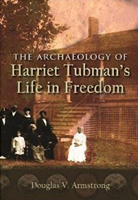 Harriet Tubman's social activism as well as her efforts as a soldier, nurse, and spy have been retold in countless books and films and have justly elevated her to iconic status in American history. Given her fame and contributions, it is surprising how little is known of her later years and her continued efforts for social justice, women’s rights, and care for the elderly. Tubman housed and cared for her extended family, parents, brothers, sisters, nieces, and nephews, as well as many other African Americans seeking refuge. Ultimately her house just outside of Auburn, New York, would become a focal point of Tubman's expanded efforts to provide care to those who came to her seeking shelter and support, in the form of the Harriet Tubman Home for the Aged. In this book, Armstrong reconstructs and interprets Tubman's public and private life in freedom through integrating his archaeological findings with historical research. The material record Tubman left behind sheds vital light on her life and the ways in which she interacted with local and national communities, giving readers a fuller understanding of her impact on the lives of African Americans. Armstrong's research is part of a wider effort to enhance public interpretation and engagement with the Harriet Tubman Home.
Harriet Tubman's social activism as well as her efforts as a soldier, nurse, and spy have been retold in countless books and films and have justly elevated her to iconic status in American history. Given her fame and contributions, it is surprising how little is known of her later years and her continued efforts for social justice, women’s rights, and care for the elderly. Tubman housed and cared for her extended family, parents, brothers, sisters, nieces, and nephews, as well as many other African Americans seeking refuge. Ultimately her house just outside of Auburn, New York, would become a focal point of Tubman's expanded efforts to provide care to those who came to her seeking shelter and support, in the form of the Harriet Tubman Home for the Aged. In this book, Armstrong reconstructs and interprets Tubman's public and private life in freedom through integrating his archaeological findings with historical research. The material record Tubman left behind sheds vital light on her life and the ways in which she interacted with local and national communities, giving readers a fuller understanding of her impact on the lives of African Americans. Armstrong's research is part of a wider effort to enhance public interpretation and engagement with the Harriet Tubman Home.
[Return to table of contents]
New Book
The Archaeology of Race and Class at Timbuctoo: A Black Community in New Jersey
By Christopher P. Barton
University Press of Florida
Cloth, 152 pp., ISBN-13: 978-0813069272, 2022.
Description from the Publisher:
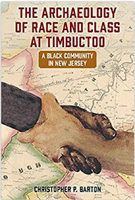 The Archaeology of Race and Class at Timbuctoo is the first book to examine the historic Black community of Timbuctoo, New Jersey, which was founded in 1826 by formerly enslaved migrants from Maryland and served as a stop on the Underground Railroad. In collaboration with descendants and community members, Christopher Barton explores the intersectionality of life at Timbuctoo and the ways Black residents resisted the marginalizing structures of race and class.
The Archaeology of Race and Class at Timbuctoo is the first book to examine the historic Black community of Timbuctoo, New Jersey, which was founded in 1826 by formerly enslaved migrants from Maryland and served as a stop on the Underground Railroad. In collaboration with descendants and community members, Christopher Barton explores the intersectionality of life at Timbuctoo and the ways Black residents resisted the marginalizing structures of race and class.
Despite some support from local Quaker abolitionists, the people of Timbuctoo endured strained relationships with neighboring white communities, clashes with slave catchers, and hostilities from the Ku Klux Klan. Through a multiscalar approach that ranges from landscape archaeology and settlement patterns to analysis of consumer artifacts, this book demonstrates how residents persevered to construct their own identities and navigate poverty. Barton incorporates oral histories from community elders that offer insights into the racial tensions of the early- to mid-twentieth century and convey the strong, lasting character of the community in the face of repression.
Weaving together memories and inherited accounts, current archaeological investigations, historical records, and comparisons to nearby Black-established communities of the era, this book illuminates the everyday impacts of slavery and race relations in a part of the country that seemed to promise freedom and highlights the use of archaeology as a medium for social activism.
[Return to table of contents]
New Book
Historical Archaeology in the Twenty-First Century: Lessons from Colonial Williamsburg
Edited by Ywone D. Edwards-Ingram and Andrew C. Edwards
University Press of Florida
Cloth, 344 pp., ISBN-13: 9780813069050, 2021.
Description from the Publisher:
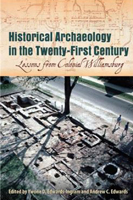 This volume is the first to offer an in-depth look at historical archaeology, public history, and reconstruction in Williamsburg through a comprehensive range of sites, topics, and analyses. Uniquely combining a historical landscape and a large town-museum complex, Colonial Williamsburg has deeply influenced the discipline for 100 years through one of the nation's longest continuously running archaeological conservation programs.
This volume is the first to offer an in-depth look at historical archaeology, public history, and reconstruction in Williamsburg through a comprehensive range of sites, topics, and analyses. Uniquely combining a historical landscape and a large town-museum complex, Colonial Williamsburg has deeply influenced the discipline for 100 years through one of the nation's longest continuously running archaeological conservation programs.
Historical Archaeology in the Twenty-First Century illuminates the town's history as an early capital of the Virginia Colony and home to the College of William and Mary. In the 1700s, Williamsburg was a center of political, cultural, and commercial life where people of African, European, and Native American descent interacted regularly. The case studies in this volume cover topics including animal husbandry, the oyster industry, architectural reconstruction, window leads, and an apothecary's display skeleton. Contributors draw attention to the interactions between enslaved and free communities as well as African American burial practices.
Using exemplary approaches and methodologies, this volume addresses key concerns in the field such as amplifying voices of the African diaspora, the development of ethically sound inclusive archaeologies, the value of environmental analyses, and the advantages of virtual models. The research highlighted here provides state-of-the-art examples of how historical archaeology can be used to inform, engage, and educate.
[Return to table of contents]
New Book
The Archaeology of Craft and Industry
By Christopher C. Fennell
University of Florida Press
Cloth, 230 pp., ISBN-13: 9780813069043, 2021.
Description from the Publisher:
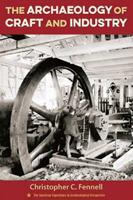 In this expansive yet concise survey, Christopher Fennell discusses archaeological research from sites across the United States that once manufactured, harvested, or processed commodities. Through studies of craft enterprise and the Industrial Revolution, this book uncovers key insights into American history from the seventeenth through the nineteenth centuries. Skilled African-American artisans played key roles in many of these settings.
In this expansive yet concise survey, Christopher Fennell discusses archaeological research from sites across the United States that once manufactured, harvested, or processed commodities. Through studies of craft enterprise and the Industrial Revolution, this book uncovers key insights into American history from the seventeenth through the nineteenth centuries. Skilled African-American artisans played key roles in many of these settings.
Exploring evidence from textile mills, glassworks, cutlery manufacturers, and tanneries, Fennell describes the complicated transition from skilled manual work to mechanized production methods, and he offers examples of how artisanal skill remained important in many factory contexts.
Fennell also traces the distribution and transportation of goods along canals and railroads. He delves into sites of extraction, such as lumber mills, copper mines, and coal fields, and reviews diverse methods for smelting and shaping iron. The book features an in-depth case study of Edgefield, South Carolina, a town that pioneered the production of alkaline-glazed stoneware pottery. Fennell outlines shifts within the field of industrial archaeology over the past century that have culminated in the recognition that these locations of remarkable energy, tumult, and creativity represent the lives and ingenuity of many people. In addition, he points to ways the field can help inform sustainable strategies for industrial enterprises in the present day.
A volume in the series the American Experience in Archaeological Perspective, edited by Michael S. Nassaney and Krysta Ryzewski.
[Return to table of contents]
New Book
Uprooted: Race, Public Housing, and the Archaeology of Four Lost New Orleans Neighborhoods
By D. Ryan Gray
University of Alabama Press
Cloth, 256 pp., ISBN-13: 978-0817320478, 2020.
Description from the Publisher:
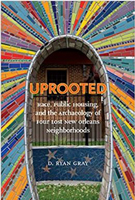 This book uses archaeological research on four neighborhoods that were razed during the construction of public housing in World War II–era New Orleans. Although each of these neighborhoods was identified as a “slum” historically, the material record challenges the simplicity of this designation. D. Ryan Gray provides evidence of the inventiveness of former residents who were marginalized by class, color, or gender and whose everyday strategies of survival, subsistence, and spirituality challenged the city’s developing racial and social hierarchies.
This book uses archaeological research on four neighborhoods that were razed during the construction of public housing in World War II–era New Orleans. Although each of these neighborhoods was identified as a “slum” historically, the material record challenges the simplicity of this designation. D. Ryan Gray provides evidence of the inventiveness of former residents who were marginalized by class, color, or gender and whose everyday strategies of survival, subsistence, and spirituality challenged the city’s developing racial and social hierarchies.
These neighborhoods initially appear to have been quite distinct, ranging from the working-class Irish Channel, to the relatively affluent Creole of Color–dominated Lafitte area, to the former location of Storyville, the city’s experiment in semilegal prostitution. Archaeological and historical investigations suggest that race was the crucial factor in the areas' selection for clearance. Each neighborhood manifested a particular perceived racial disorder, where race intersected with ethnicity, class, or gender in ways that defied the norms of Jim Crow segregation.
Gray's research makes use of both primary documents—including census records, city directories, and even the brothel advertising guides called "Blue Books" -- and archaeological data to examine what this entailed at a variety of scales, reconstructing narratives of the households and communities affected by clearance. Public housing, both in New Orleans and elsewhere, imposed a new kind of control on urban life that had the effect of making cities both more segregated and less equal. The story of the neighborhoods that were destroyed provides a reminder that their erasure was not an inevitable outcome, and that a more equitable and just city is still possible today. A critical examination of the rise of public housing helps inform the ongoing debates over its demise, especially in light of the changing face of post-Katrina New Orleans.
[Return to table of contents]
New Book
Sustaining Support for Intangible Cultural Heritage
Edited by Shihan de Silva Jayasuriya, Mariana Pinto Leitão Pereira, and Gregory Hansen
Cambridge Scholars Publishing
Cloth, 205 pp., ISBN-13: 978-1-5275-8134-0, 2022.
Description from the Publisher:
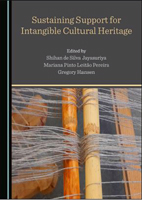 Intangible Cultural Heritage (ICH) has recently grown as an analytical construct for documenting and interpreting culture, and as a canonical term to support official concepts of heritage. ICH, while compelling scholars to explore its multiple forms of expressive culture, has become codified through UNESCO, specifically within the 2003 Convention for the Safeguarding of ICH. This volume explores case studies of the ICH of African and African-descendant peoples in Gabon, India, Mozambique, Sri Lanka, and the USA to represent diverse positionalities and voices articulating the complexities, ambiguities and uncertainties within heritage discourses. The chapters illustrate how ICH, in the midst of the COVID-19 pandemic, has become an analytical resource and a proscriptive device for safeguarding, presenting, and interpreting culture to a range of constituents, and will serve as a useful resource in the classroom for a range of fields.
Intangible Cultural Heritage (ICH) has recently grown as an analytical construct for documenting and interpreting culture, and as a canonical term to support official concepts of heritage. ICH, while compelling scholars to explore its multiple forms of expressive culture, has become codified through UNESCO, specifically within the 2003 Convention for the Safeguarding of ICH. This volume explores case studies of the ICH of African and African-descendant peoples in Gabon, India, Mozambique, Sri Lanka, and the USA to represent diverse positionalities and voices articulating the complexities, ambiguities and uncertainties within heritage discourses. The chapters illustrate how ICH, in the midst of the COVID-19 pandemic, has become an analytical resource and a proscriptive device for safeguarding, presenting, and interpreting culture to a range of constituents, and will serve as a useful resource in the classroom for a range of fields.
[Return to table of contents]
New Book
Dismal Freedom: A History of the Maroons of the Great Dismal Swamp
By J. Brent Morris
University of North Carolina Press
256 pp., ISBN-13: 978-1469668253, 2022.
Description from the Publisher:
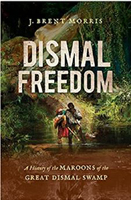 The massive and foreboding Great Dismal Swamp sprawls over 2,000 square miles and spills over parts of Virginia and North Carolina. From the early seventeenth century, the nearly impassable Dismal frustrated settlement. However, what may have been an impediment to the expansion of slave society became an essential sanctuary for many of those who sought to escape it. In the depths of the Dismal, thousands of maroons—people who had emancipated themselves from enslavement and settled beyond the reach of enslavers—established new lives of freedom in a landscape deemed worthless and inaccessible by whites.
The massive and foreboding Great Dismal Swamp sprawls over 2,000 square miles and spills over parts of Virginia and North Carolina. From the early seventeenth century, the nearly impassable Dismal frustrated settlement. However, what may have been an impediment to the expansion of slave society became an essential sanctuary for many of those who sought to escape it. In the depths of the Dismal, thousands of maroons—people who had emancipated themselves from enslavement and settled beyond the reach of enslavers—established new lives of freedom in a landscape deemed worthless and inaccessible by whites.
Dismal Freedom unearths the stories of these maroons, their lives, and their struggles for liberation. Drawing from newly discovered primary sources and archeological evidence that suggests far more extensive maroon settlement than historians have previously imagined, award-winning author J. Brent Morris uncovers one of the most exciting yet neglected stories of American history. This is the story of resilient, proud, and determined people who made the Great Dismal Swamp their free home and sanctuary and who played an outsized role in undermining slavery through the Civil War.
[Return to table of contents]
New Book
Maroons in Guyane: Past, Present, Future
By Richard Price and Sally Price
University of Georgia Press
Cloth, 200 pp., ISBN-13: 9-780-8203-6245-8, 2022.
Description from the Publisher:
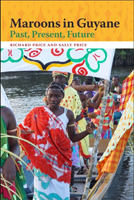 For more than four centuries, communities of maroons (men and women who escaped slavery) dotted the fringes of plantation America, from Brazil through the Caribbean to the United States. Today their descendants still form semi-independent enclaves -- in Jamaica, Brazil, Colombia, Belize, Suriname, Guyane, and elsewhere -- remaining proud of their maroon origins and, in some cases, faithful to unique cultural traditions forged during the earliest days of Afro-American history.
For more than four centuries, communities of maroons (men and women who escaped slavery) dotted the fringes of plantation America, from Brazil through the Caribbean to the United States. Today their descendants still form semi-independent enclaves -- in Jamaica, Brazil, Colombia, Belize, Suriname, Guyane, and elsewhere -- remaining proud of their maroon origins and, in some cases, faithful to unique cultural traditions forged during the earliest days of Afro-American history.
In 1986, expelled by the military regime of Suriname, anthropologists Richard and Sally Price turned to neighboring Guyane (French Guiana), where thousands of Maroons were taking refuge from the Suriname civil war. Over the next fifteen years, their conversations with local people convinced them of the need to replace the pervasive stereotypes about Maroons in Guyane with accurate information. In 2003, Les Marrons became a local best seller. In 2020, after a series of further visits, the Prices wrote a new edition taking into account the many rapid changes.
Available for the first time in English, Maroons in Guyane reviews the history of Maroon peoples in Guyane, explains how these groups differ from one another, and analyzes their current situations in the bustling, multicultural world of this far-flung outpost of the French Republic. A gallery of the magnificent arts of the Maroons completes the volume.
[Return to table of contents]
New Book
Hear Me Now: The Black Potters of Old Edgefield, South Carolina
Edited by Adrienne Spinozzi
Metropolitan Museum of Art & Yale University Press
Cloth, 200 pp., ISBN-13: 978-1588397263, 2022.
Description from the Publisher:
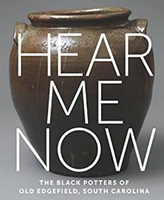 Nineteenth-century stoneware by enslaved and free potters living in Edgefield, South Carolina, highlights the central role of Black artists in the region's long-standing pottery traditions.
Nineteenth-century stoneware by enslaved and free potters living in Edgefield, South Carolina, highlights the central role of Black artists in the region's long-standing pottery traditions.
Recentering the development of industrially scaled Southern pottery traditions around enslaved and free Black potters working in the mid-nineteenth century, this catalogue presents groundbreaking scholarship and new perspectives on stoneware made in and around Edgefield, South Carolina. Among the remarkable works included are a selection of regional face vessels as well as masterpieces by enslaved potter and poet David Drake, who signed, dated, and incised verses on many of his jars, even though literacy among enslaved people was criminalized at the time. Essays on the production, collection, dispersal, and reception of stoneware from Edgefield offer a critical look at what it means to collect, exhibit, and interpret objects made by enslaved artisans. Several featured contemporary works inspired by or related to Edgefield stoneware attest to the cultural and historical significance of this body of work, and an interview with acclaimed contemporary artist Simone Leigh illuminates its continued relevance.
[Return to table of contents]
New Book
Sailing to Freedom: Maritime Dimensions of the Underground Railroad
Edited by Timothy D. Walker
University of Massachusetts Press
Cloth, 248 pp., ISBN-13: 978-1625345929, 2021.
Description from the Publisher:
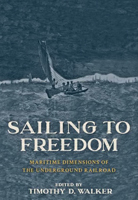 In 1858, Mary Millburn successfully made her escape from Norfolk, Virginia, to Philadelphia aboard an express steamship. Millburn's maritime route to freedom was far from uncommon. By the mid-nineteenth century, an increasing number of enslaved people had fled northward along the Atlantic seaboard. While scholarship on the Underground Railroad has focused almost exclusively on overland escape routes from the antebellum South, this groundbreaking volume expands our understanding of how freedom was achieved by sea and what the journey looked like for many African Americans.
In 1858, Mary Millburn successfully made her escape from Norfolk, Virginia, to Philadelphia aboard an express steamship. Millburn's maritime route to freedom was far from uncommon. By the mid-nineteenth century, an increasing number of enslaved people had fled northward along the Atlantic seaboard. While scholarship on the Underground Railroad has focused almost exclusively on overland escape routes from the antebellum South, this groundbreaking volume expands our understanding of how freedom was achieved by sea and what the journey looked like for many African Americans.
With innovative scholarship and thorough research, Sailing to Freedom highlights little-known stories and describes the less-understood maritime side of the Underground Railroad, including the impact of African Americans' paid and unpaid waterfront labor. These ten essays reconsider and contextualize how escapes were managed along the East Coast, moving from the Carolinas, Virginia, and Maryland to safe harbor in northern cities such as Philadelphia, New York, New Bedford, and Boston.
[Return to table of contents]
New Exhibit
Hear Me Now: The Black Potters of Old Edgefield, South Carolina
September 9, 2022 to February 5, 2023, Metropolitan Museum of Art, New York City
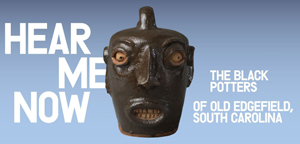 Join co-curators Adrienne Spinozzi (The Met), Ethan Lasser (Museum of Fine Arts, Boston), and Jason Young (University of Michigan), to go inside this exhibit and explore the work of African American potters in the 19th-century American South. This exhibition and short film feature a reconstructed stoneware jug excavated by Dr. George Calfas and a University of Illinois archaeology field school at the Pottersville site in Edgefield in 2011.
Join co-curators Adrienne Spinozzi (The Met), Ethan Lasser (Museum of Fine Arts, Boston), and Jason Young (University of Michigan), to go inside this exhibit and explore the work of African American potters in the 19th-century American South. This exhibition and short film feature a reconstructed stoneware jug excavated by Dr. George Calfas and a University of Illinois archaeology field school at the Pottersville site in Edgefield in 2011.
From the Met exhibit website: "Focusing on the work of African American potters in the 19th-century American South -- in dialogue with contemporary artistic responses -- the exhibition presents approximately 50 ceramic objects from Old Edgefield District, South Carolina, a center of stoneware production in the decades before the Civil War. Hear Me Now will include monumental storage jars by enslaved and literate potter and poet David Drake alongside rare examples of the region’s utilitarian wares, as well as enigmatic face vessels whose makers were unrecorded. Considered through the lens of current scholarship in the fields of history, literature, anthropology, material culture, diaspora, and African American studies, these 19th-century vessels testify to the lived experiences, artistic agency, and material knowledge of enslaved peoples."
[Return to table of contents]
New Exhibit
Sailing to Freedom: Maritime Dimensions of the Underground Railroad
May 20, 2022 to November 20, 2022, Center Street Gallery, New Bedford Whaling Museum
 From the exhibit website --
From the exhibit website --
"The advantages of escape by boat were early discerned by slaves living near the coast or along inland rivers. Vessels engaged in our coastwise trade became more or less involved in transporting fugitives from Southern ports to Northern soil." -- William H. Siebert, The Underground Railroad from Slavery to Freedom (1898, 81).
Self-emancipation along the Underground Railroad was not entirely by overland routes. What has been largely overlooked by historians is the great number of enslaved persons who made their way to freedom using coastal water routes along the Atlantic seaboard. Enslaved African Americans often escaped by sea aboard merchant and passenger ships, or using smaller watercraft.
This groundbreaking exhibition, at the Center Street Gallery, New Bedford Whaling Museum, 18 Johnny Cake Hill, New Bedford, Massachusetts, expands our understanding of how freedom was achieved by sea and what the journey looked like for many African Americans.
Research undertaken for this exhibition demonstrates that a far larger number of fugitives than previously thought actually escaped bondage by sea -- especially those fleeing from coastal areas in the Deep South, where slaves were commonly employed in diverse maritime industries, such as: estuary and near-coastal fishing or oystering, tidal river boatmen and ferrymen, coastwise cargo shipping crews, shipyard artisans, or stevedores and longshoremen.
Such work gave enslaved persons significant experience with vessels and seafaring, a basic knowledge of coastal geography, direct or indirect contact with ships' crews from northern free states, and ready access to vessels heading out to sea. This specialized strategic knowledge conveyed power and opportunity. For enslaved persons in the far coastal south, escape by water was the logical option, and the only viable way to achieve an exit from their enslaved circumstances.
[Return to table of contents]
New Exhibit
Picturing Black History: Photographs and Stories that Changed the World
An online exhibition
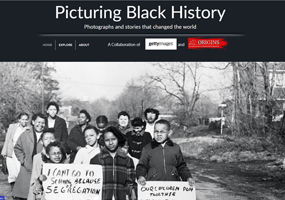 From Press Release, May 4, 2022 --
From Press Release, May 4, 2022 --
The Ohio State University has collaborated with Getty Images, a preeminent global visual content creator and marketplace, to launch Picturing Black History, a joint initiative to recontextualize and surface Black histories, providing new perspectives and shedding light on some of the most culturally significant moments of the past.
Part of Origins: Current Events in Historical Perspective -- published jointly by Ohio State and Miami University -- Picturing Black History contributes to an ongoing public dialogue on the significance of Black history and Black life in the United States and around the world. Picturing Black History directly embraces the power of historical understanding to help reexamine visual history through digital formats, challenging the inherent biases of 200 years of photographic history.
By combining the breadth and depth of Getty Images' archives with the renowned expertise of Origins and Ohio State's Department of History, the project uses the power of visuals to highlight stories of oppression and resistance, perseverance and resilience, freedom dreams, imagination and joy within the United States and around the globe. To support the learning and expansion of these historical narratives, the editorial team at Picturing Black History features esteemed authors from across academia and cultural institutions matching in-depth essays with historical pictures.
"The issues of racism and Black lives have perhaps never been more urgent to our national conversation than they are right now, nor has it ever been more important to understand the history of Black America in all its complexity," said Nicholas Breyfogle, associate professor of history at Ohio State and co-editor of Picturing Black History. "The challenge is to bring this history to wider audiences so that, with deeper understanding, we can forge a more equitable and just future. Picturing Black History and our exciting new collaboration with Getty Images strive to meet that challenge."
"Through this collaboration with Ohio State and Origins, we have an opportunity to challenge dated narratives and help enrich our learnings of Black history," said Bob Ahern, director of archive photography at Getty Images. "By opening up our archives, we have a chance to embrace the power of photography and the written word to revisit histories that have so often been sidelined."
"Picturing Black History is a partnership that highlights visual imagery of Black history that is too often veiled from public view," said Damarius Johnson, another PhD student in the Department of History who is working on the project.
"What has shifted in the past few years, especially following the murder of George Floyd, is the growing urgency and hunger from all people to better understand history, to be able to make broader connections, and to situate their own lived experiences within these historical narratives," said Daniela Edmeier, a PhD student in the Department of History who is working on the Picturing Black History project. "These narratives that are simultaneously difficult to reckon with but that are of the utmost importance to embrace truthfully and examine with critical open eyes."
[Return to table of contents]
Perspectives on Slavery and Freedom in Brazil
October 27, 2022, Webinar
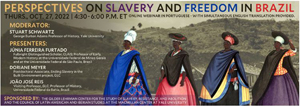 October 27, 2022, webinar, 4:30pm to 6:00pm (ET).
October 27, 2022, webinar, 4:30pm to 6:00pm (ET).
In Portuguese, with simultaneous English translation.
Sponsored by: Gilder Lehrman Center (GLC) for the Study of Slavery, Resistance, and Abolition; Council of Latin American and Iberian Studies; and the MacMillan Center at Yale University. Moderator: Stuart Schwartz (George Burton Adams Professor of History, Yale University). Presenters: Júnia Ferreira Furtado (Fulbright Distinguished Scholar, CLAIS; Professor of Early Modern History at the Universidade Federal de Minas Gerais and at the Universidade Federal de São Paulo, Brazil), Doriane Meyer (Postdoctoral Associate, Ending Slavery in the Built Environment project, GLC), and João José Reis (Visiting Professor, GLC; Professor of History, Universidade Federal da Bahia, Brazil).
Junia Furtado: "Black Pearls in the Little Africa: the women of color in Tejuco village, Brazil, XVIII century." The village of Tejuco, now the town of Diamantina, was the headquarters of the Diamond District, placed in the Northeast of Minas Gerais captaincy. My aim is through a Census and a Map, both produced in 1774, show some layers of the feminine geography of the social life of the town, revealing a more dynamic and plural configuration, where a significant number of people of color, mostly black African women, were heads of household. Their presence transformed Tejuco into a Little Africa.
João Reis: "The Biography of An Enslaved African who Became An African Enslaver in 19th-Century Bahia, Brazil." Manoel Joaquim Ricardo, an African from Hausaland, landed in Bahia in c. 1806 as an enslaved person, became a successful merchant, and died a rich freedman in 1865. At death he owned property that included twenty-seven slaves, four houses, and two small farms in the outskirts of Salvador. The extraordinary trajectory of this man is the subject of a book that I am presently writing.
Doriane Meyer: "Landscapes of Power and Resistance." The built environment of the plantations was a spatial projection of unequal power relations, a territory defined by the power of those who were in charge. However, the enslaved workers, using their familiarity with the plantation spaces, carried out acts of resistance. Today, Brazilian landscapes still reflect the legacy of slavery, and the maids' rooms in the residences replicate the architecture of the plantations. This study aims to contribute to scholarship about how architecture participated in the foundations of an unequal Brazilian society.
Register online.
[Return to table of contents]
The Roundtable for Black Feminist and Womanist Theory
November 3-5, 2022, Hanover, New Hampshire
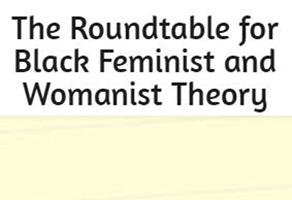 Please join us for the 3rd annual meeting of The Roundtable for Black Feminist and Womanist Theory, which will be held at Dartmouth College (Hanover, New Hampshire) from November 3-5, 2022. Scholars, artists, and activists are across all career stages, disciplines, and affiliations are encouraged to apply and attend. Graduate students and junior scholars are especially encouraged to participate.
Please join us for the 3rd annual meeting of The Roundtable for Black Feminist and Womanist Theory, which will be held at Dartmouth College (Hanover, New Hampshire) from November 3-5, 2022. Scholars, artists, and activists are across all career stages, disciplines, and affiliations are encouraged to apply and attend. Graduate students and junior scholars are especially encouraged to participate.
To ensure the greatest amount of flexibility and accessibility for attendees, the meeting will be hybrid (in-person and virtual). Our two illustrious keynotes this year will be Tiffany King (Women, Gender & Sexuality, University of Virginia) and Omise'eke Tinsley (Black Studies, University of California, Santa Barbara). Lindsey L. Stewart (Philosophy, University of Memphis) will be giving an invited talk as well, which certainly isn't to be missed! The link to register and submit a paper is here. If you plan on attending please make sure to register! There is no fee, but registration is required to attend either the virtual or in-person component.
Please email bfwroundtable@gmail.com with any questions and make sure to share with anyone who may be interested in attending and/or presenting!
[Return to table of contents]
Society for Historical Archaeology
2023 Conference on Historical and Underwater Archaeology
January 4-7, 2023, Lisbon, Portugal
 Revisiting Global Archaeologies
Revisiting Global Archaeologies
The theme for the conference not only references the international location and outlook of the meeting alongside the modern history of Lisbon as the center of one of the most significant global European empires of the early modern period, but also acknowledges the transformation of historical archaeology into a truly global discipline. It is envisioned that the theme will encourage individual papers and symposia that address the increasingly global character of the discipline in the past, present and future, as well as themes of movement and diaspora, and industrialization and mechanization. Many European archaeologists also define 'historical' archaeology differently, noting that the historical record dates back to earlier periods, and this conference may provide the opportunity to explore disciplinary definitions in a global context while still focusing on the post-1500 world.
SHA's annual conferences include many presentations of subjects concerning African diaspora archaeology.
Online, advance registration for the conference is open until December 15, 2022; after December 15, registration will be done on-site in Lisbon.
[Return to table of contents]
The Sixth International Congress of African and African Diaspora Studies (ICAADS)
August 3-6, 2023, Accra, Ghana
 Why: To reinvigorate the extraordinary transformational momentum in African Studies globally that began at the first International Congress of African Studies in Ghana in 1962. Subsequent convenings were in Dakar (1967), Addis Ababa (1973), and Kinshasa (1978), but no Congress meeting convened after Ibadan (1985). ICAADS would convene on the 60th anniversary of the founding of the Organization of African Unity and the 50th anniversary of the Third International Congress -- in the city where it all began. ICAADS aims to bring together African and African Diaspora Studies to formally mark the intellectual and political unity of Africa and the African Diaspora and to serve as a forum to reflect on the broadly shared histories, contemporary realities, and to affirm the future destinies of continental Africans and African-descended people across the globe.
Why: To reinvigorate the extraordinary transformational momentum in African Studies globally that began at the first International Congress of African Studies in Ghana in 1962. Subsequent convenings were in Dakar (1967), Addis Ababa (1973), and Kinshasa (1978), but no Congress meeting convened after Ibadan (1985). ICAADS would convene on the 60th anniversary of the founding of the Organization of African Unity and the 50th anniversary of the Third International Congress -- in the city where it all began. ICAADS aims to bring together African and African Diaspora Studies to formally mark the intellectual and political unity of Africa and the African Diaspora and to serve as a forum to reflect on the broadly shared histories, contemporary realities, and to affirm the future destinies of continental Africans and African-descended people across the globe.
Format: The "Congress" format facilitates the dual purpose of an academic conference with policy implications addressing urgent contemporary issues impacting Black communities across the globe. These include, but are not limited to: Reparations; The Repatriation of African Artifacts; Neocolonialism and Pan-Africanism; Gender and Sexuality; Re-engaging the 6th Region of the African Union; Citizenship; The State and Policing; Environment and Public Health; The Status and Treatment of African Migrants Inside and Outside of the Continent; Africa's Positions Regarding International Conflicts; and The State of the Study of Africa and its Diasporas in the World Today.
This Congress is sponsored by the African Studies Association of Africa (ASAA), Association for the Study of the Worldwide African Diaspora (ASWAD), African Studies Association (ASA), and "Africa is a Country" (link). Please follow #ICAADS2023 for more details!
[Return to table of contents]
Book Review
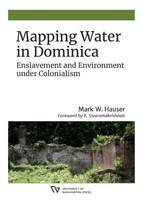
Mark W. Hauser. Mapping Water in Dominica: Enslavement and Environment under Colonialism. Seattle: University of Washington Press, 2021. xvii + 249 pp. (Paperback), ISBN 978-0-295-74872-6.
H-Net Book Review, published by H-Environment, https://networks.h-net.org/h-environment (February 2022).
Reviewed for H-Environment by Gerald Horne, University of Houston.
For ages the tiny Caribbean island of Dominica was tremendously rich in biodiversity and water too, but in the eighteenth century invading colonizers chose to replace indigenous plant species with sugarcane. This ignited widespread environmental, social, and political disruption, suggesting that plantation slavery was not just implicated in ecological devastation.
By his own admission the author is "an archaeologist writing colonial history" (p. ix), and, thus, he is examining shards of slave property, waterways, mills, and vessels for storing water. As for the written record, the author relies upon archives in London, Aix-en-Provence (France), Martinique, and Dominica itself. He also relies upon a journal of Jonathan Throup, compiled in the late eighteenth century and housed at the University of Aberdeen. He adds, "To locate relevant sources, I relied heavily on published work, including secondary sources that included transcriptions or interpretations of documents" (p. 35). To his credit, the author is able to capture the voices of the enslaved by securing "rebels' testimonies," that is, those Africans and their allies who sought to turn colonial society upside down and were interrogated
afterwards.
During the 1791 New Year's Day Revolt, "the whole of the island's enslaved population in the southeast rose up in revolt, to create an independent state on the windward side of the island" (p. 151). The rebellion was influenced by ongoing unrest in the region, much of it sparked by what became the Haitian Revolution, 1791-1804, which inspired similar upheaval in the vicinity with similar results for our purposes here: that is, interrogatories of the enslaved, which constitute an often untapped source for getting a glimpse of Africans' views of the environment and social reality. The author writes to that end: "the nature of this conspiracy was not restricted to its shores" (p. 152).
The author also pays attention to natural forces that continue to bedevil, for example, the overwhelming hurricane of 1788 when hundreds were killed and similar events in 1817 and 1834. Hurricanes arrived in the wake of the heralded "Sugar Revolution," which transformed the island and led to further devastation as this crop tended to supplant food sources -- plantain, maize, okra, bananas -- to the detriment of Dominica's denizens. Of course, sugar was primarily an export crop, meaning ab initio less food for the enslaved.
This is a well-written book that has the added advantage of demonstrating the value of archaeology for the study of history, environmental history not least. This is especially the case when the author examines vessels that have survived that were used for transporting water. The text is also illuminated by a number of illustrative graphics with informative wording by the author attached.
[Citation: Gerald Horne. Review of Hauser, Mark W. Mapping Water in Dominica: Enslavement and Environment under Colonialism. H-Environment, H-Net Reviews. February, 2022. This work is licensed under a Creative Commons Attribution-Noncommercial-No Derivative Works 3.0 United States License. H-Net permits the redistribution and reprinting of this work for nonprofit, educational purposes.]
[Return to table of contents]
Book Review
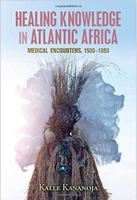
Kalle Kananoja. Healing Knowledge in Atlantic Africa: Medical Encounters, 1500-1850. Cambridge: Cambridge University Press, 2021. 320 pp. (Cloth), ISBN 978-1-108-49125-9, and Sean Morey Smith and Christopher D. E. Willoughby, editors. Medicine and Healing in the Age of Slavery. Baton Rouge: Louisiana State University, 2021. 240 pp. (Cloth), ISBN 978-0-8071-7121-9.
H-Net Book Review, published by H-Africa, https://networks.h-net.org/h-africa (May 2022).
Reviewed for H-Africa by Matt Heaton (Virginia Tech).
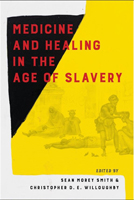
Social and cultural historians of health, healing, and medicine have long sought to de-center the teleological framing of Western biomedicine as the proper and primary lens through which to understand knowledge and treatment of the human body and its myriad ailments. On the one hand, the recognition of medical pluralism, both historical and contemporary, has allowed scholars to articulate the complex interplay between epistemologies, health, illness, and healing, as well as the decision-making processes of individual health seekers. At the same time, scholarship on the circulation of medical knowledge between and across health care systems -- spatially, temporally, and culturally -- has significantly eroded perceptions of the autochthonous nature of human societies' varied medical beliefs and practices, including Western biomedicine. The result is an emphasis in the historiography of health and medicine on the ways that intercultural encounters have shaped and been shaped by engagement with and transfer of medical beliefs and knowledge. The two books under review here offer different, but complementary, perspectives on the complexity of exchanges and transformations of medical knowledge and practice in the Atlantic world from the sixteenth to nineteenth century, with a particular emphasis on the experience and influence of Black Africans, both on the African continent and in the slave systems of the Americas.
In Healing Knowledge in Atlantic Africa, Kalle Kananoja explores medical encounters and exchanges between Africans and Europeans in West-Central Africa between 1500 and 1850. Though some attention is paid to British and Dutch interactions in Sierra Leone and Gold Coast, the bulk of the book concentrates on relationships between Portuguese and indigenous medical systems in Angola and Kongo. Individual chapters focus on particular forms of knowledge production, dissemination, and implementation: cross-cultural experiments, botanical knowledge, healers and hospitals, humoral science, and medical geography. Kananoja focuses largely on European documentary sources from the era under consideration, which tend to center the activities and perspectives of European actors, but the author reads these sources with an eye toward discerning the African healers, informants, and interlocutors who were crucial to the cross-cultural exchange of medical knowledge. As a result, the indigenous African origins of European ideas about health and illness in African environments becomes clear, the extent to which Europeans relied on African health systems while living in West-Central Africa apparent, and the ways that Europeans collected, categorized, and exported African knowledge to Europe and the Americas undeniable. Take, for example, the enkasa tree, known to the Portuguese as the Tree of Life. Kananoja demonstrates the important role that the bark of the tree played in indigenous health systems in Kongo, and the extent to which Portuguese settlers incorporated it into their own health care practices over the course of two centuries. Enkasa bark could be used for a variety of purposes, from treating physical ailments to counteracting poison or witchcraft. Both Portuguese and indigenous communities used enkasa for all of these purposes. At the same time, the Portuguese had also begun importing chinchona from South America by the eighteenth century, contributing their own forms of materia medica to the complex health care landscape of West-Central Africa.
Of course, not all medical interactions were characterized by free and equal exchange of health care knowledge and services. Kananoja also demonstrates the dark side of these cross-cultural exchanges, and the violence of European racialized power structures in colonial contexts. At the same time that European residents of West- Central Africa depended on local medical knowledge for their own health care needs, they were also wary of the power of African medicines to harm as well as heal. Indeed, one of the key source bases that Kananoja mines for information about the medical landscape in Angola and Kongo are Inquisitorial trial records in which African healers were accused of poisoning or otherwise ensorcelling vulnerable victims. Though local communities supplied most of the local knowledge that Europeans incorporated into their own healing practices, Africans were generally prevented from becoming doctors and medical experts on equal terms to Europeans. However, Africans did participate in the European medical system in other ways. According to Kananoja, virtually all barbers in Angola were Africans. Barbers performed some functions within humoral medicine, most notably bloodletting, which also had a long history with distinct meaning in many indigenous cultures. African barbers could engage with European medicine in this way while also incorporating their own indigenous knowledge into their practice. And as Kananoja notes, African barbers also crossed the Atlantic as victims of the transatlantic slave trade, marking one of the ways that indigenous health care knowledge circulated to the Americas, where it became enmeshed with European and Native American health care systems.
On the whole, Kananoja argues that the intensity of medical exchanges in Atlantic Africa were brought about through necessity: Europeans simply did not have the resources or knowledge to care for themselves in African environments using only their existing knowledge and resources. They had to rely on Africans to provide these things in situ. At the same time, however, Kananoja emphasizes that such exchanges were successfully sustained over such a long period because "in many ways early modern European and African medical practices resembled one another" (p. 10). Though Kananoja focuses mostly on West-Central African contexts, he makes clear that this diverse, varied, and hybridized medical knowledge followed both Africans and Europeans across the Atlantic, a context explored more thoroughly in Sean Smith and Christopher Willoughby's edited collection.
Medicine and Healing in the Age of Slavery compiles ten chapters plus an introduction from the editors. The editors identify the goals of volume as threefold: 1) to situate Western medicine as only one of many healing systems that circulated in the Atlantic; 2) to engage with conceptions of illness and well-being from the perspective of enslaved patients and healers; and 3) to suggest that state intervention in the master-slave dynamic has been understated (p. 2). The chapters in the volume range cover a wide range of times and places and are more episodic than an attempt at any kind of comprehensive coverage or overarching narrative. Organized along the themes of knowledge, experience, and profession, the chapters center the knowledge and experiences of enslaved individuals and communities across the Americas.
The chapters in the "knowledge" section contribute most toward demonstrating the pluralistic and hybrid nature of health care systems in the Americas during the age of slavery. A chapter by Lauren Derby identifies Taíno meaning in the use of zemi stones in Haitian zonbi practices that have historically been primarily identified with African- descended slave populations. Chelsea Berry's chapter on poisoning accusations focuses on the case of Swart Jan in Paramaribo, Suriname, in the 1740s to demonstrate the complex understanding of the nature of poisoning within enslaved communities and their recourse to legal complaints against alleged poisoners in their midst. Like Kananoja, Berry emphasizes the widespread recognition among both Africans and Europeans that medical knowledge could be used both to heal and to harm, and that fears of violence existed not just across the master-slave divide, but also within enslaved communities. Mary E. Hicks examines the African barbers of Salvador de Bahia, demonstrating the hybrid role they played as practitioners within the European medical system, mostly employed to heal slaves in the eighteenth and early nineteenth centuries, while simultaneously recognizing the indigenous roots of the epistemology behind their healing strategies. As in Kananoja's volume, Hicks emphasizes bloodletting as a central therapy of Bahian sangradores, but locates their origins in the Fon and Yoruba cultures of West Africa where from where a critical mass of Bahian slaves originated.
The "Experiences" section focuses more on effects of European racist beliefs about the nature of Blackness on the health and health care of enslaved individuals. Deirdre Cooper Owens urges a "haptic" approach to understanding the health of enslaved patients, emphasizing the sensory experience of an existence in an anti-Black slave system and a medical structure built on the notion of Black inferiority. In a similar vein, Elise A. Mitchell offers a reconsideration of the discourse of feigned illness in slave societies. A preoccupation of slave owners, modern historians have long considered feigned illness a form of resistance on the part of slaves. Mitchell, however, urges us to consider that much of the feigned illness documented in the records of slaveholders likely was not feigned at all, but was simply not taken seriously or was not identifiable in terms that European slaveholders and the medical system that supported them were willing to recognize. Brandi M. Waters provides a fascinating case of slaves in late colonial Colombia who petitioned the state for manumission on the grounds of disability, arguing that their compromised physical conditions made them less valuable to their owners. These relatively rare cases often resulted in owners being required to allow the enslaved individual to purchase their freedom for a discounted price, which charitable abolitionist organizations sometimes assisted slaves to do. This chapter demonstrates the ways that enslaved individuals could occasionally use the medico-legal framework of slave societies to their advantage, in specific, constrained, contexts.
The final section, "Professions" focuses attention on the volume's third goal, interrogating the role of the state in racializing medical science through the entrenched context of racialized slavery. Rana A. Hogarth offers a chapter on the evolution of slave hospitals in Charleston in the early national period. Such hospitals existed in a variety of forms: public and private, housed on plantations, and attached to medical schools. These hospitals advertised as spaces where slaves could be restored to health for the benefit of their masters, while simultaneously serving as spaces for medical training and experimentation, "offering eager young medical students opportunities for hands-on clinical training" by the early nineteenth century (p. 159). Timothy James Lockley charts changing understanding within European medical knowledge about the relationship between Blackness and perceived immunity to yellow fever. While the cause of this supposed immunity had originally been located in the skin of Black people, by the mid-nineteenth century white medical scientists increasingly located the immunological disparity primarily in "negro blood," fueling definitions of race based on invisible notions of blood that "facilitated policies both in the United States and beyond that led directly to the disenfranchisement, discrimination, marginalization and oppression of nonwhite peoples" (p. 177). Leslie A. Schwalm provides a chapter illustrating the ways that the US government used the context of the Civil War as an opportunity to study Black bodies, in so doing impacting "the development of medical science and discovery by more deeply committing medical knowledge and medical professionalization to racist ideologies" (p. 193).
The volume concludes with an epilogue by Sharla Fett, a vanguard scholar in the historical study of medicine and slavery in the United States. Fett urges us to think of slavery and medicine in relation to Christina Sharpe's metaphor of the "wake" -- a term with several distinct meanings, including "the watery track of a slave ship, a ritual for the dead, and a state of consciousness," all of which can be applied as filters for understanding the experiences and contributions of enslaved patients and healers (p. 198).
Each book contributes immensely on its own to the rich contextualization of distinct but connected medically plural landscapes in the Atlantic world as well as the violent and unequal power dynamics that shaped the forms, functions, and processes by which medical knowledge operated on each side of the ocean, with Kananoja focusing largely on West-Central Africa and the essays in Smith and Willoughby's volume attending largely to the Western Hemisphere. The general themes of widespread medical pluralism, cross-cultural translation and circulation of medical knowledge, and the social construction of medical knowledge in context of highly unequal power dynamics that each book emphasizes draw upon well-studied and largely accepted ideas in the social and cultural history of medicine. Nevertheless, each book provides well-grounded and tangible evidence for their applicability in the Atlantic context that should serve both as valuable case studies to deepen the knowledge of scholars and as useful introductions to these ideas for novices in the field. Taken together, these two books provide a strong impression of both the structural and epistemic connections that have shaped the Atlantic world as a meaningful category for studying the complex multicultural, collaborative and interdependent but simultaneously violent and racialized, history of health and medicine in the modern world.
[Citation: Matt Heaton. Review of Kananoja, Kalle. Healing Knowledge in Atlantic Africa: Medical Encounters, 1500-1850; Smith, Sean Morey, and Willoughby, Christopher D. E., eds., Medicine and Healing in the Age of Slavery. H-Africa, H-Net Reviews. May, 2022. This work is licensed under a Creative Commons Attribution-Noncommercial-No Derivative Works 3.0 United States License. H-Net permits the redistribution and reprinting of this work for nonprofit, educational purposes.]
[Return to table of contents]

©2022 African Diaspora Archaeology Network
Copyright and all rights reserved by
individual authors for each article.
Please send comments, suggestions,
or questions to the editors
Last updated: October 22, 2022
Text only menuSearch
|































